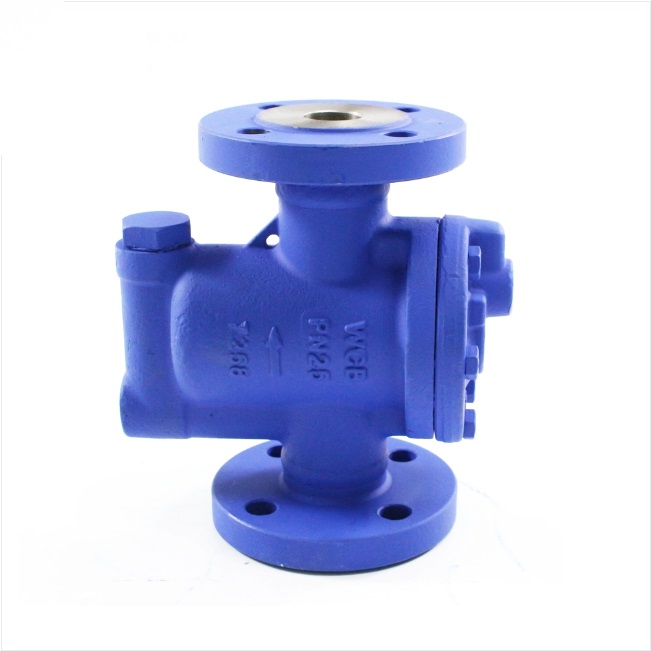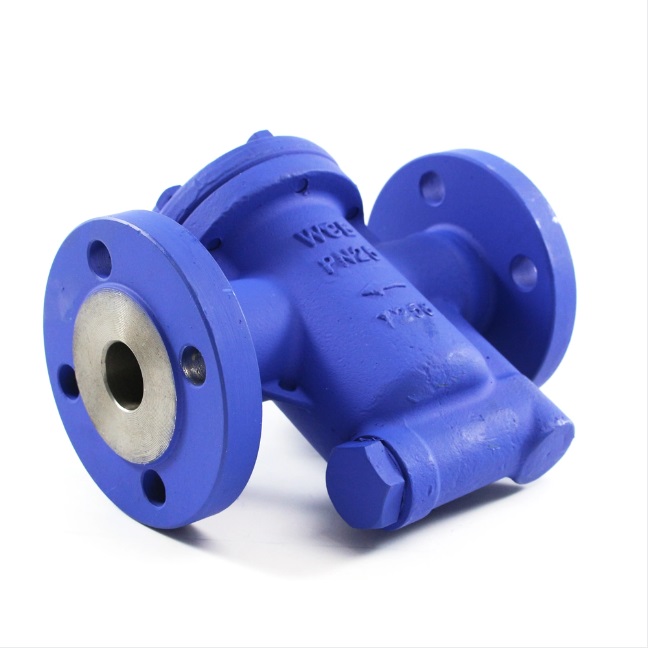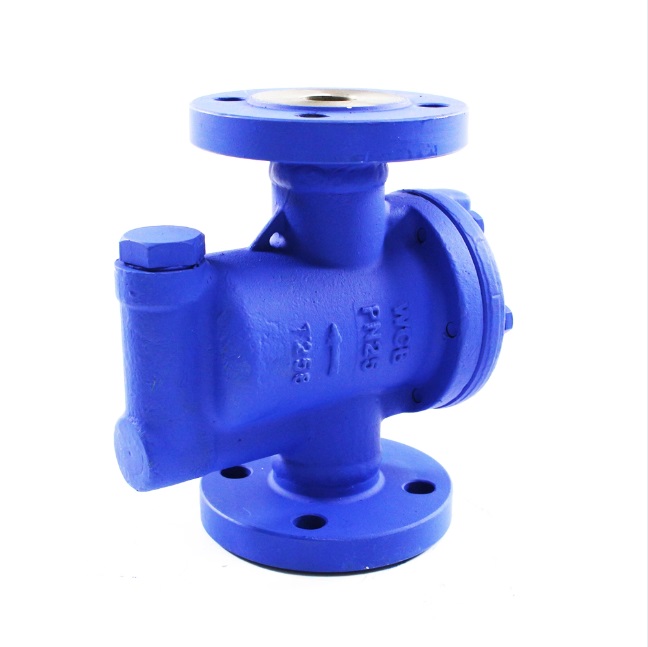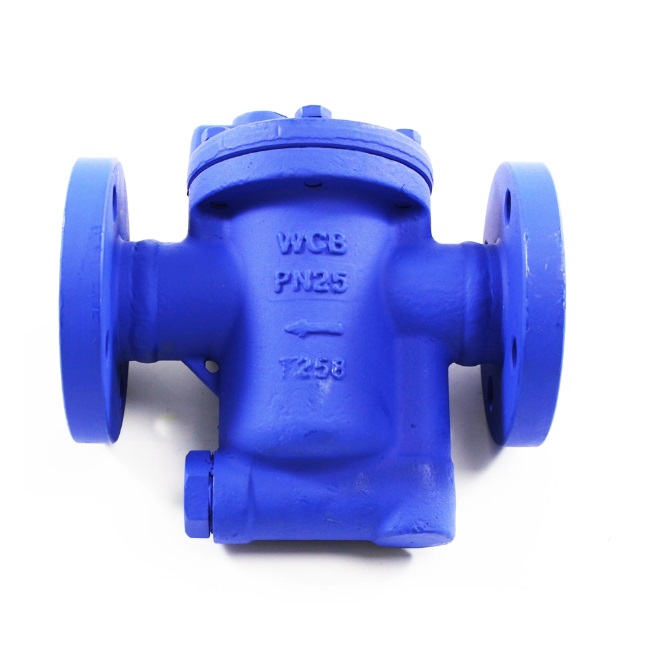There are many types of steam trap products. For example, traps are mainly divided into lever float traps, inverted bucket traps, thermodynamic traps, imported thermostatic and bimetal traps, and imported bimetal traps. All types of traps have different principles of operation, structural characteristics and limitations of use. Among mechanical traps, two commonly used traps are the inverted bucket trap and the float trap, which are commonly used as heat exchanger blowdowns and steam separator blowdowns.
The inverted bucket trap, also known as the inverted bucket trap, works by utilizing the difference in density between condensate and steam. The internal structure is connected to the reversing bucket by a lever system to overcome the steam pressure switch. Inside a Backbucket Trap is a Backbucket Trap. The barrel is a liquid sensitive part and the opening of the inverted barrel is downwards.
After starting, air and low-temperature discharges will be discharged from the pipeline immediately, and the trap valve will be fully opened at this time, air and low-temperature discharges will be discharged quickly, and the temperature inside the equipment will rise rapidly. When steam enters the reversing bucket, the reversing bucket generates upward buoyancy, which is connected to the lever to drive the spool and close the valve. There is a small hole in the inverted bucket that automatically vents the air, and when one part of the steam is expelled through this small hole, another part of the steam is expelled. When steam re-enters the reversing bucket, the valve is closed again, periodically actuated, and intermittently vented.
The lever float well uses the principle of buoyancy. The floating ball moves up and down according to the amount of condensed water and automatically adjusts to changes in water level. It will return to the closed position and the drain will stop. The gas is separated naturally, and there is no steam leakage. Because unique manufacturing requirements limit the widespread use of free-floating traps, they are not separately documented.
The trap test data shows that compared with the lever float trap, the inverted bucket trap has a stronger body, simple structure, water hammer resistance and longer service life. Compared with the lever float trap, the inverted bucket trap has higher water tightness, the trap operates smoothly, and the trap that is often opened does not carry steam and the leakage is extremely small. Inverted buckets are more fouling resistant than lever float traps and are less susceptible to dirt and debris. It has certain corrosion resistance and discharge resistance.
If the system pressure changes suddenly or is used to discharge superheated steam, the water seal will disappear and the steam will easily leak, so a check valve must be installed at the inlet.
Float trap uses the change of condensed water level to directly control the opening of the trap, and has the characteristics of sensitive response and timely adjustment. A built-in thermostat vent valve gives the lever float valve excellent actuating and venting capabilities. If the load changes frequently, install a heat exchanger with a steam temperature control valve to vent. A float catcher is a better fit than an inverted bucket.
Generally, an inverted bucket trap is more suitable if the pressure in the vapor space of the heat exchanger changes slowly. Float traps are more suitable if the pressure in the vapor space changes frequently (frequent load changes). Inverted bucket traps are more durable for applications with poor steam quality or adverse operating conditions. For main heat exchanger drain and ultra-low pressure steam drain, float trap has more advantages.




 WENZHOU WEITUO VALVE CO., LTD.
WENZHOU WEITUO VALVE CO., LTD.